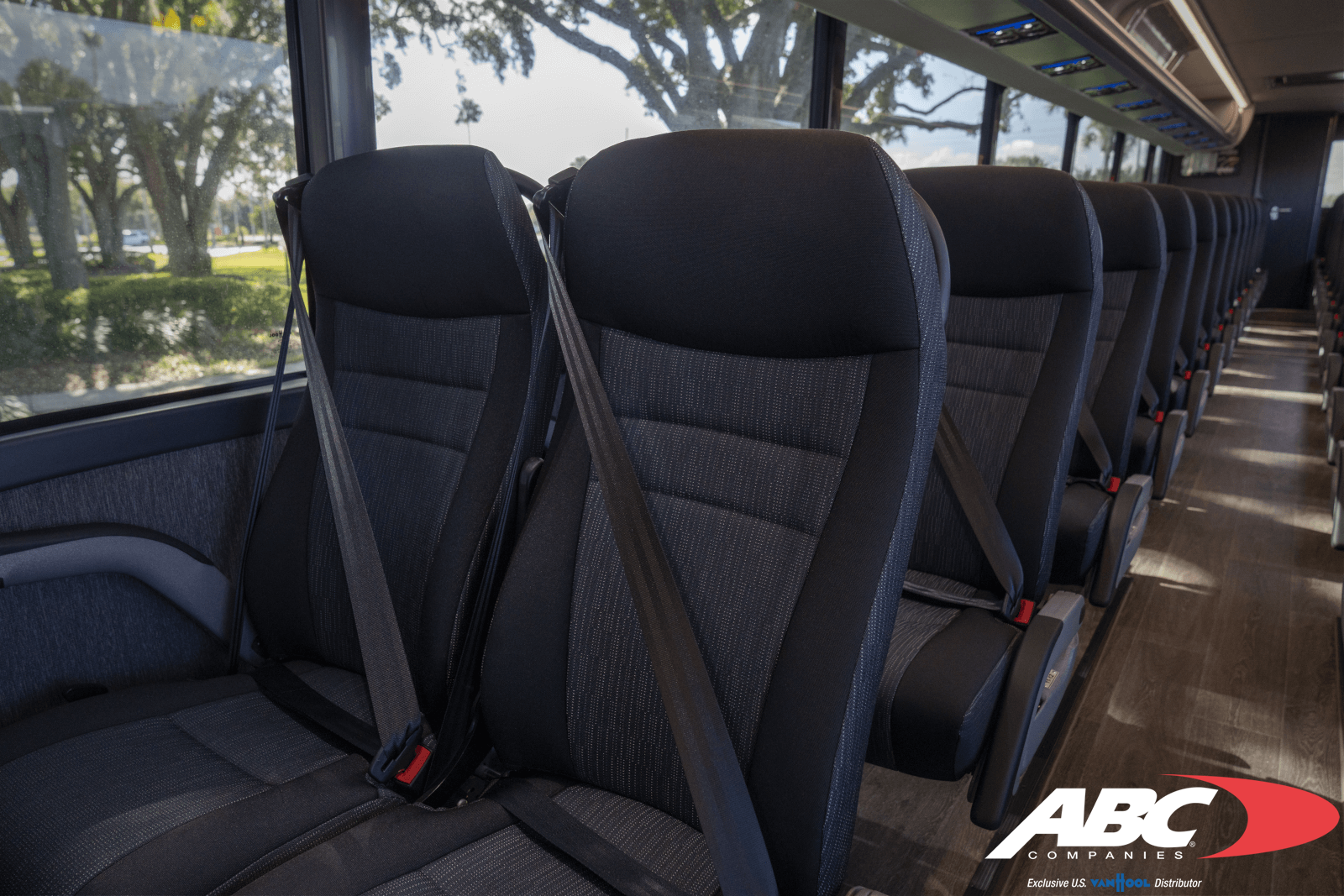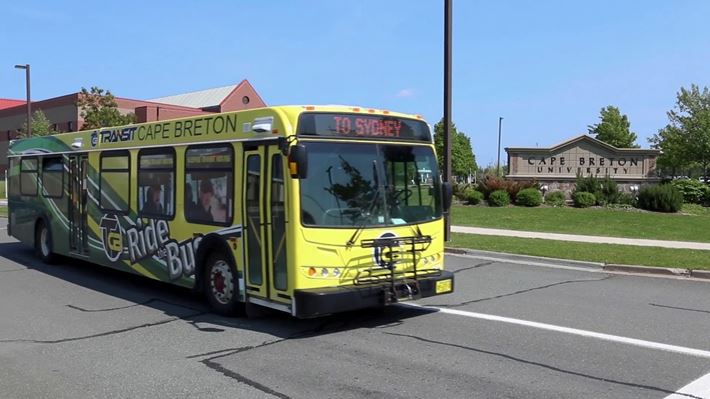CBRM Transit Overhaul
There's a new council in town, and they bring a breath of fresh air and new ideas. Congratulations to all who won the election! Mayor Amanda McDougall promised a 4-year development strategy for the CBRM, and in this post I will be presenting my ideas for an overhaul of CBRM Transit, that I hope makes it into the committees.
In this presentation, you will see:
- Three lessons and three problems,
- A draft of all brand new routes,
- Why I think that small buses are better for CBRM, and
- A short part on handi-trans
Everything in this post is subject to scrutiny by professionals.
Three Lessons and Three Problems
Kingston Transit and the Cataraqui Mall

This here is the Cataraqui Centre (pronounced cat-a-raw-kway), also known as the Cataraqui Mall, in Kingston, Ontario (about 136,000 people). It's similar to the Mayflower Mall, except it has more stores and a bigger food court. Cataraqui Centre's success is, the way I've noticed while I lived in Kingston from 2016-2018, largely due to Kingston Transit.
Eight years ago, Kingston Transit started a program that provided high school students with free bus passes. They continued the program in 2019 after the Federation of Canadian Municipalities awarded them with a Sustainable Community Award in transportation for the program in 2018.
During my stay in Kingston, I noticed that between 3:00pm-7:00pm on any given weekday, the Cataraqui Centre's food court was filled with high school students (a lot more than you'd see in the Mayflower Mall). Apparently, these were kids benefiting from the free bus pass system, and the mall was racking in the benefits. This leads to the main lesson of this post: transit must serve business growth.
When the CBRM looks to improve businesses, transit can be an effective way to increase sales. By making efforts to increase ridership among certain demographics, and taking them to their popular destinations, you increase the amount of people going to these places.
And already, we have a fundamental problem with CBRM Transit. The largest rider demographic by far are international students. Since the housing crisis a few years ago, the buses that go to CBU have been jam packed, and if this issue is not addressed soon it will continue after the pandemic when in-person classes resume. Not only is it a safety hazard to be bussing so many standing people at 80km/hr, but the way that CBRM Transit has been handling it is not serving business growth in CBRM.
When the crisis broke out a few years ago, I emailed Council to point out that the use of the CBU Shuttle bus is not a good strategy for a main road route, because it does not stop at the Mayflower Mall or at Walmart. They have since added the Shopping Malls bus, but sometimes the CBU Shuttle bus is what they send. When the Sydney-Glace Bay bus is full (and it usually is before reaching Welton St), there is no reliability on whether the backup bus is for Sydney-Glace Bay, Shopping Malls, or for CBU only. People trying to go to places other than CBU (or to Glace Bay if the Shopping Malls bus is sent) would have to wait for the next regular bus, which would likely be filled again. This issue not only discourages transit use from non-students for their daily transportation needs, but students who also plan to go to these popular shopping destinations cannot rely on the buses to take them there. When a bus arrives at the huge 100+ person lineup at CBU, the driver says that the other bus goes to the shopping malls, and suddenly the lineup breaks apart and people scramble to fill up that bus. There's no guarantee that the person in front of the line (in many cases waiting for nearly an hour) will make it onto either bus if there are only two that arrive.
Of course, this is a problem of there not being enough buses and drivers to cycle the route frequently, but I wanted to point out that the lack of consistency and reliability for these buses to reach their destinations is hurting our businesses, as well as inconveniencing our riders.
Now notice in the picture above, the blue bus, while the others are white. The blue bus is what you call an express bus. It's a main road bus that goes by every 15 minutes or less during the day in Kingston. If I recall correctly, Kingston got help from the Trudeau liberals in 2016 to invest in more frequent times along these routes, and now the routes that go to the malls go by every 10 minutes or less during the day. I believe the federal government also helped in building that transfer point you see in front of the mall. As a popular destination, their mall is a major transfer point, about just as major as their transfer point in downtown (and their downtown transfer point is, in my opinion, only major due to Queen's University being located a few blocks away).
CBRM can take a tip from Kingston by retrofitting the Mayflower Mall as a major transfer point, and having multiple routes converge there regularly. This way, teenagers and university students can access the mall more conveniently, and are therefore more likely to use transit.
Turning the Mayflower Mall also helps to create a moving-forwards-to-move-forwards situation.
An international student living in the McConnell Drive apartment complex has two Ashby bus stops around the corner of the top and bottom of the complex. However, the Ashby bus does not serve students very well, because they will actually save more time by walking all the way down to Prince St, and take the main road bus from there. In order to reach CBU or the malls from Ashby, you must ride the bus down to Dorchester St, transfer there, and ride the full route up to your destination. This is an example of moving-backwards-to-move-forwards, and it adds too much time to a person's commute that it discourages transit use. By having the Ashby bus stop at the mall, the rider can exit the bus at the mall, and transfer to a CBU bus from there.
Kingston Transit also makes use of reverse routes to serve moving-forwards-to-move-forwards. Not all of them have reverse routes, but all of the express routes do. This guarantees that you can get to any part of the city by the fastest means possible.
Now notice in the picture, the huge map. This is a minor thing that makes all the difference. You can see every route on a single color-coded map, the riding times for every route and a separate map for the express routes and their times, and by the way these are found in every bus shelter across Kingston. Kingston Transit's map is easy to read, and helps to make Transit more accessible when approaching a random bus stop. Here is a list of problems the CBRM in my opinion has with minor things that make all the difference:
- The bus pass prices are not listed on the website, you must contact the office for prices. This is such a basic problem, since prospective university students will often look at transit first before anything else. Not being able to see the prices at first glance on the CBRM's website is a red flag that could deter many people from coming to CBRM. This problem also hurts budget-calculating for future residents.
- The maps and routes are not easy to read. While both CBRM and Kingston's routes and maps are found in separate pdf files, CBRM's documents are a nasty sight, as everything is in black and white, and the timetables are confusing and inconsistent. There is one bus (I think it's Steeles' Hill) that goes by once every hour, then once every two hours, then once every hour, then once every two hours, all at inconsistent intervals, all on the same day. This one timetable alone is enough to prevent people from coming to the CBRM. Kingston Transit's routes (particularly the express routes) list a starting time, followed by every X minutes depending on the route, time of day and day of the week, followed by the next every Y minutes. And they do this for the morning, day, evening and night. Kingston buses run until midnight, regardless of the ridership of any particular route.
- There is a lack of shelters at the bus stops, and not every shelter has a bench. It's the 21st Century, we need these shelters and benches, especially in a municipality with so many seniors.
- Our bus shelters have no maps or timetables, or any contact information for CBRM Transit. Anyone who approaches a bus stop for the first time could have no knowledge of which bus to take or where they go.
- Kingston Transit allows transit users to track their buses in real time using GPS. When I was in Kingston, I used the Transit app, which is a transit app that calculates the quickest route to your destination in real time. They even include Uber in the calculation and the price you would most likely pay (although in CBRM's case you need to use the traditional taxi services). The Transit app is so useful you can literally watch the bus on the map as it moves across the route. I've used this app on many occasions to accurately determine if I have time to snack at Tim Hortons before going to the bus stop (this also helps to serve business growth, particularly for CBU's Downtown Nutrition, Caper Crêpes and Subway locations, as well as for the food court at the mall). Unfortunately though for CBRM, the buses are not trackable by the public, and the Transit app relies on volunteers to track their phone, but no one ever uses that feature. So, you can only rely on the regular times (and the sporadic sending of CBU buses during peak times doesn't help with the reliability of the app).
- CBRM charges $1.25 + $1.00 per zone, but riders shouldn't be expected to know what a zone is. What this problem results in is the driver being prompted to ask anyone who pays more than $1.25 where they are going, which can feel a little personal for some people. There's also another problem with the CBU tickets, which cost only $1.50 for two zones, but are only valid to and from CBU (remember transit must serve business growth). CBRM can avoid these problems by providing a flat fee (around $2.50) that takes you anywhere in the CBRM, transfers included, and by providing more accessible ways of providing student discounts, leading to the final point.
- When a rider with a monthly pass enters the bus, they have to visibly show the driver their card. This is a method of validation that is becoming more outdated as the years go by. In Kingston, and many other cities around the world, buses use smart cards to tap on machines that beep on validation and boop-boop on declines. These machines make the drivers' jobs so much easier, and you can also use smart cards to provide more customized discounts, or even special offers for regular riders (like a summer pass for summer events). You can have a reloadable pass that allows riders to load a number of uses on their reloadable card, applying their demographic discount (in Kingston it's Youth 15-24 and Seniors 65+, we could be Youth 15-24 and Seniors 65+ as well, but I recommend we also add Full-time Students for students 25+).
New Bus Routes
Full Route Map
Here are my ideas for new bus routes. They're not perfect, but I do believe them to be much better than what we have right now. Google will only let me make ten routes at a time, so there are two maps. You can find MAP ONE HERE and MAP TWO HERE.
Here are the details of the designs:
- You can go anywhere in the CBRM in one transfer or less.
- The Mayflower Mall is the new #1 transfer point in the CBRM, with Dorchester St as a close second. Just the Glace Bay buses don't go to Downtown, because you are better off transferring at the mall.
- Every bus goes to the Mayflower Mall and a shopping centre.
- Every high school is located on or near a bus route.
- Every route is designed to get you to where you need to go usually in the fastest way possible.
- Route 100 is the CBU-NSCC route, designed to take you from one school to the other. It is the only route that does not have a reverse, as it is the only route that is the same in both ways. This bus should run every 5-15 minutes, and at least once every 30 minutes in the evening. This is the main route in Sydney designed to take students along Prince/Welton, and those transferring from the mall. By having the Glace Bay and Sydney routes separated, you ensure quicker cycles of the routes.
- Some routes were merged together to better serve those communities. For example, Routes 20A/20B and 22A/22B are the merged Whitney Pier and Ashby routes. Without adding any actual routes (other than the reverse Bs), you can actually add more destinations within those routes (such as Open Hearth Park), and still allow every stop to have, at all times, one route that takes you to the mall in the quickest way, and another that takes you to Downtown in the quickest way. You can also ride these routes into the next area, decreasing the amount of transfers between them.
- The currently operating 10 routes were changed to 13, and 7 areas were added to the transit coverage, including rural routes for Louisbourg, Donkin/Port Morien and Eskasoni. The rural routes in Louisbourg and Eskasoni look a little wonky I admit, they're designed to be road-trip-like routes that pick up everyone in the spread-out corners of the towns, before leaving for Sydney.
Why I Think That Small Buses are Better for CBRM
The Seats in a Coach Bus

There would definitely be a need to purchase new buses in order to fulfill the changes I suggested above. This could be very costly. You could use the potential equalization funding for such a project, but I would estimate that we would need at least $80M in equalization (after equalizing tax rates with Halifax) before we would have enough room to even maintain the new buses. However, I am optimistic that with the new council we can secure enough equalization to maintain this transit overhaul, but I don't think that whatever equalization we get would be enough to purchase the buses. But that doesn't mean we are out of luck.
In the CBC mayoral debate, Cecil Clarke mentioned that he would focus on switching to electric buses, and he was on the right track with that point. The provincial and federal governments have an obligation to support green initiatives, and switching to electric transit is one of those things. We could appeal to the provincial and federal (federal in particular) to purchase the buses on our behalf, so we can maintain the service. If we have a coordinated plan of what buses we need and how they will be used, the upper levels of government would be more willing to support the program, because then it becomes something that they would want to succeed in order to win votes. CBU political science professor Tom Urbaniak calls this strategy "giving them the win", and you can use this strategy for the equalization funds as well.
Now, part of the problem with CBRM Transit that I haven't mentioned yet is the issue that unlike compact cities, where buses are built for traffic-filled streets at 50km/hr and short commutes to faster services like subways and trains, the CBRM is a cluster of towns separated by access roads and highways. City buses are not, in my opinion (and according to the federal government as of September 1st all new buses on the highways require seat belts), built for this type of travel. These are roads with high speeds, and anyone who's had to stand on a bus between towns/CBU would know that the bus can really throw you around, and that's not safe.
So, I recommend the CBRM council to start looking at alternative solutions for our unique geography. My recommendation is to partner with the manufacturer to have shuttle/coach style seating instead of the standard city-bus seats (helps to fulfill new federal rules too). This allows for a much more comfortable riding experience for these long commutes on the highway, and this is something that the CBRM could use to advertise to prospective residents and students. However, these buses would have to be built for seating capacity, instead of standing capacity, but good timing for that, because standing capacity has fallen out of favor of municipalities since the covid shutdown in March.
How does this all relate to small buses? It's about efficiency and riding experience. Small buses are efficient with energy, and they are quieter and less bumpy than their larger counterparts. Small buses also allow for more frequent cycles, which is one of the biggest problems CBRM faces with transit. Why have one big bus every hour when you can have one small bus every thirty minutes? By using small buses, you can attract more riders, since now the service is more reliable and cycles more frequently. So, the next time you need to go from Membertou to North Sydney, chances are there's a small bus that will arrive in 15 minutes or less, that will take you forwards to the Keltic Plaza, to go forwards in 15 minutes or less to North Sydney.
So, basically, have the federal/provincial governments invest in a zero-emissions (or significantly less emissions) transit overhaul for the CBRM by partnering with a manufacturer (or a few) to provide a fleet of buses tailored specifically for the CBRM's geography. We should, though, invest in as much of the costs ourselves if we can, and even offer to add the costs to our public debt as a better incentive for the other governments to invest.
Handi-Trans Service
Handi-Trans gets a bad reputation for not being readily available, and riders having to call days in advance. I'm not sure if the CBRM has this problem, but I recommend that we still make the improvements to the service to turn it into some sort of Uber, where you make the request, and within minutes a driver is on the way and you can track it through real time, like the regular buses. I also recommend extending the service to stroller-pushers and people with walkers and canes, in case the new regular buses focuses on maximizing the seating capacity. Extending the service in this way will make sure that it's being used regularly and frequently, so there are no gaps in service where riders need to request days in advance. I also recommend investing in low-floor handi-trans (with the ramps), because the elevator is a bit outdated in my opinion.
Well, that's the presentation, hope you liked it. If you do, be sure to let Amanda McDougall and your new councilor know that you would like to see the things in this overhaul be included in their development strategy.






4
Log In or Sign Up to add a comment.- 1
arrow-eseek-e1 - 2 of 2 itemsFacebook Comments